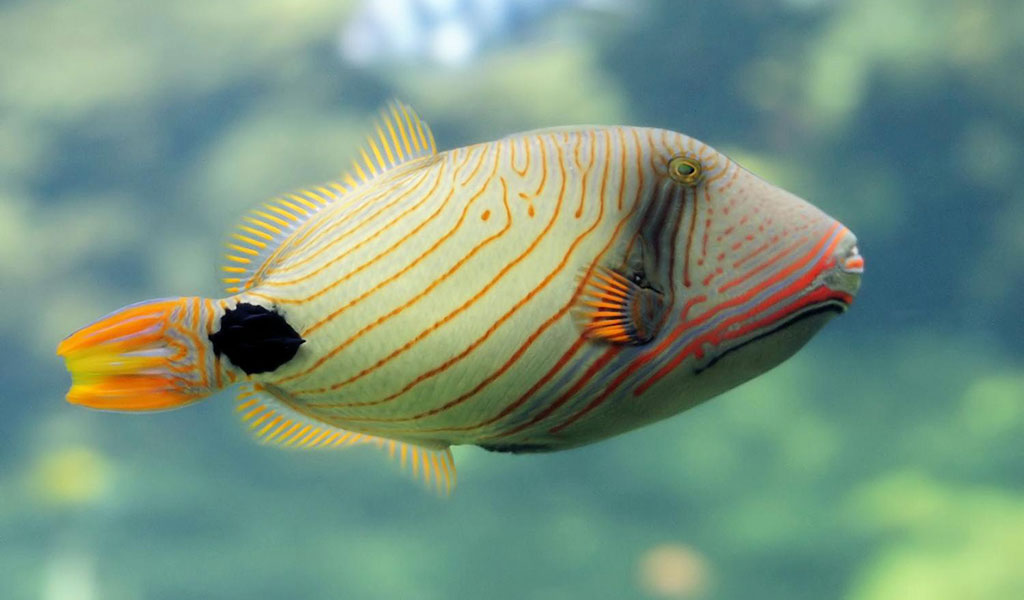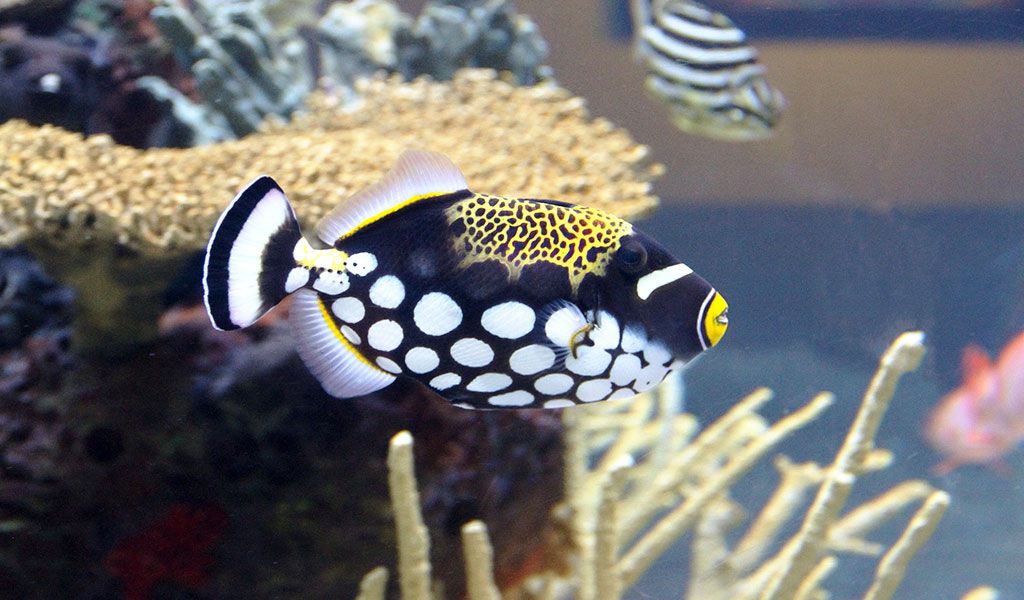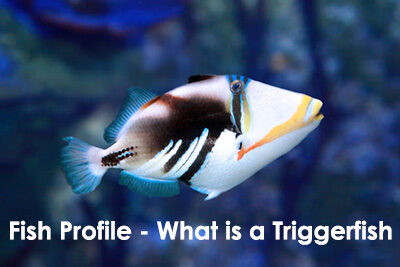Renowned for its unique appearance and intriguing behavior, triggerfish can be found in various tropical and subtropical waters around the world. They are named triggerfish because of a specialized dorsal fin that possesses one or more sturdy spines resembling a trigger mechanism. These spines can be locked in an upright position, enabling fish to seek refuge in crevices or defend their territory.
In this fish profile, we will explore the different species of triggerfish. Join us as we dive into the captivating world of triggerfish and uncover the secrets of these remarkable aquatic creatures.
What is a triggerfish
Featuring compressed bodies, small mouths, and a set of specialized dorsal fin spines, triggerfish belong to the Balistidae family. The compressed and laterally flattened bodies allow triggerfish to navigate through rocky reefs and coral formations with ease. Also, their small mouths house powerful jaws armed with sharp teeth, enabling them to crush and consume a wide range of prey, including invertebrates, crustaceans, and small fish.
Besides that, triggerfish exhibit a wide range of colors and patterns. Some species have vibrant and striking colors, while others have more subdued hues. Many triggerfish have intricate patterns, spots, or lines on their bodies, providing camouflage or visual signals.
Plus, triggerfish are territorial and aggressive. It poses the risk of aggression towards tank mates. Moreover, they can rearrange substrate, push rocks or corals to create shelters or uncover hidden prey.
Reef triggerfish
Reef triggerfish generally include several triggerfish species. the Picasso triggerfish (Rhinecanthus aculeatus) and the Clown triggerfish (Balistoides conspicillum) are the most well-known ones. In this segment, we will cover the features of reef triggerfish.
- Fish behavior: Reef triggerfish are territorial. They establish and defend their territories on the reef, often aggressively chasing away intruders.
- Colorful display: Many reef triggerfish species exhibit vibrant and eye-catching colors. They often display a combination of bright yellows, blues, greens, blacks, and whites, making them visually striking.
- Some are venomous: Certain reef triggerfish species, like the titan triggerfish, have venomous spines on their dorsal fins. While not typically lethal to humans, their stings can cause pain and inflammation.
- Nest protectors: Triggerfish are diligent nest protectors. The males construct and guard nest sites on the reef, where the females deposit their eggs. The males fiercely defend the nests against any potential threats.

Types of triggerfish
Picasso Triggerfish (Rhinecanthus aculeatus)
Found in the Indo-Pacific region, including the Red Sea and the Great Barrier Reef, the Picasso triggerfish is a popular and highly recognizable species due to its vibrant colors and unique patterns. It is known for its vibrant colors, including black, white, yellow, blue, and green.
Clown Triggerfish (Balistoides conspicillum)
Native to the Indo-Pacific, including the Maldives and the Hawaiian Islands, clown triggerfish has a distinctive appearance with a yellowish body covered in large black spots and lines, along with blue and yellow markings on the face.
Titan Triggerfish (Balistoides viridescens)
Found in the Indo-Pacific region, including the Red Sea and the Great Barrier Reef, the Titan triggerfish is one of the largest triggerfish species, known for its aggressive behavior and territorial nature. They are highly territorial and will aggressively defend their nesting sites and feeding areas. They are known to exhibit aggressive behavior towards intruders, including divers and snorkelers, particularly during their nesting season.
In addition to the three types of triggerfish mentioned above, there are other types. For instance, Undulated Triggerfish (Balistapus undulatus), Bluechin Triggerfish (Xanthichthys auromarginatus), Crosshatch Triggerfish (Xanthichthys mento), Pinktail Triggerfish (Melichthys vidua), Niger Triggerfish (Odonus niger), etc.
How about triggerfish in a home aquarium
Tank size
Triggerfish can grow quite large, so providing an adequately sized tank is essential. The minimum recommended tank size for most triggerfish species is around 75–100 gallons, but larger tanks are preferable for accommodating their size and territorial nature.
Tank setup
Create a suitable environment by incorporating plenty of live rock or other forms of rock work to create caves, crevices, and hiding spots. Triggerfish appreciate having places to retreat and establish territories. Also, you should ensure the tank has a secure lid or cover as triggerfish are known to be jumpers.

Water parameters
Maintain stable and appropriate water parameters for the specific triggerfish species you are keeping. Most triggerfish prefer a temperature range of 75-82℉ (24-28℃), a pH level of 8.1-8.4, and a specific gravity of 1.020-1.025 for saltwater species. Typically, it is necessary to regularly monitor and test the water quality, and do water change.
Filtration and water flow
Adequate filtration is crucial to maintain great water quality. Triggerfish are messy eaters, and their large size contributes to increased waste production. You can consider a quality protein skimmer and robust filtration system to handle the bioload. Additionally, providing moderate to strong water flow in the tank helps simulate their natural reef habitat.
Tank mates
Selecting compatible tank mates is crucial. Triggerfish can be aggressive, especially towards fish of similar size and shape. So avoid keeping them with small or docile species and research species that are known to coexist peacefully with triggerfish or consider a species-only tank.
Diet
Triggerfish are omnivorous and require a varied diet. You should provide a combination of high-quality commercial foods that are suitable for marine carnivores, such as pellets, flakes, and frozen or live foods. Viable meaty options include shrimp, squid, and fish. Also, supplement their diet with occasional fresh or frozen vegetables to provide dietary fiber.
End of the line
In short, triggerfish are a captivating group of fish known for their unique appearance and intriguing behavior. Actually, these fish play a vital role in coral reef ecosystems, helping control populations of small invertebrates, contributing to nutrient cycling, and even participating in coral reproduction. However, due to their territorial nature and potential for aggression, it is vital to approach triggerfish with caution.
